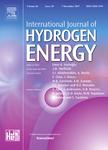版权所有:内蒙古大学图书馆 技术提供:维普资讯• 智图
内蒙古自治区呼和浩特市赛罕区大学西街235号 邮编: 010021

作者机构:Nanjing Univ Aeronaut & Astronaut Res Ctr Soft Energy Sci Nanjing 211106 Peoples R China Nanjing Univ Aeronaut & Astronaut Coll Econ & Management Nanjing 211106 Peoples R China Soochow Univ Sch Polit & Publ Adm Suzhou 215123 Peoples R China
出 版 物:《INTERNATIONAL JOURNAL OF HYDROGEN ENERGY》 (Int J Hydrogen Energy)
年 卷 期:2025年第105卷
页 面:441-457页
核心收录:
学科分类:0820[工学-石油与天然气工程] 08[工学] 0807[工学-动力工程及工程热物理] 0703[理学-化学]
基 金:Programme of National Social Science Foundation of China [24BGL221]
主 题:Wind power PV power Hydrogen Multi-objective optimization model MOGWO algorithm
摘 要:Wind and photovoltaic (PV) coupled hydrogen production has gradually become one of the effective ways to cope with the intermittency and volatility of wind and PV power generation, promoting the utilization of their generated power. However, the current wind-PV-hydrogen coupling system mainly focuses on electricity-to- hydrogen conversion, while hydrogen-to-electricity conversion, especially for bidirectional electricity- hydrogen-electricity closed-loop systems, urgently requires in-depth research. In addition, although previous studies have incorporated fuel cell equipment, research on its costs and future development potential remains insufficiently explored. Moreover, the reliability requirements of system hydrogen production are rarely taken into account in multi-objective optimization. In this regard, this study proposes a coupling system that integrates wind power, PV power, electrolyzer equipment, hydrogen storage equipment, and hydrogen fuel cell equipment. The system enables hydrogen production, storage, co-generation, and bidirectional conversion between electricity and hydrogen. Subsequently, a multi-objective capacity configuration optimization model for the coupling system is constructed, aiming to maximize economic benefits, and minimize carbon dioxide emissions and fluctuations in electrolytic power. Then as a case study in Northwest China, employing a Multi-Objective Grey Wolf Optimizer (MOGWO) algorithm to solve the model and determine the optimal capacity configuration of the system. The results show that the system has a power abandonment rate of 1.33%, with an economic benefit of approximately 92,000 yuan, carbon dioxide emissions of about 19,000 kg, and electrolysis power fluctuations of around 2,800,000 kW2. In subsequent discussions and analysis, the study found that integrating hydrogen fuel cells into the coupled system effectively reduces reliance on external grids, which is of significant importance for achieving carbon reduction goals. F